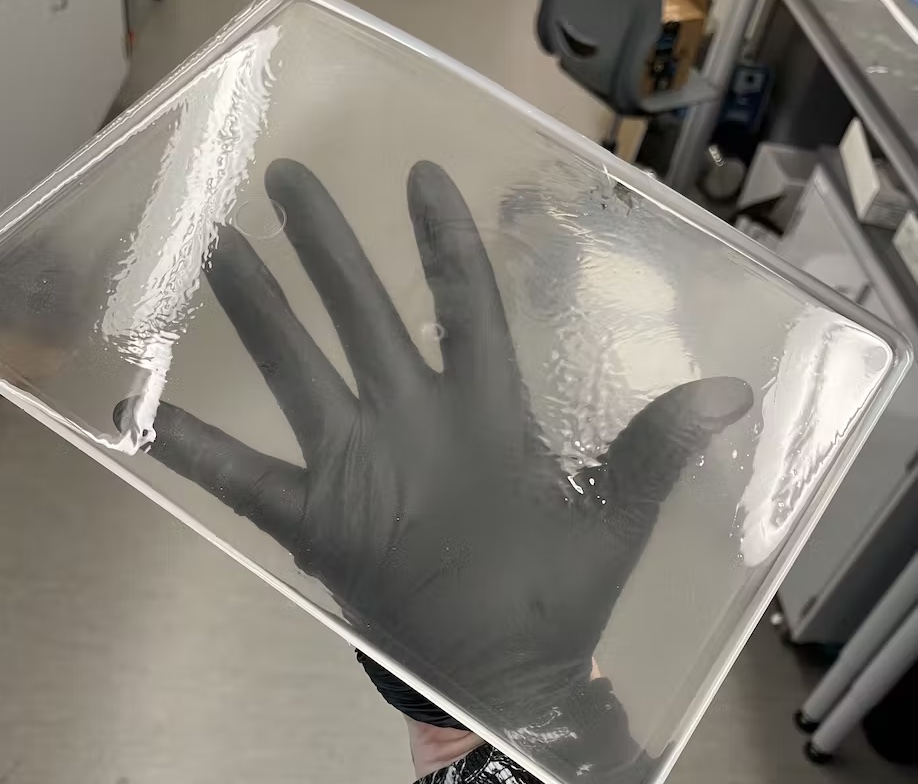Floral cries, a silent ship, and a smart heater for beehives. This week’s coolest things listen to Mother Nature.
What is it? Researchers in Israel decoded the audible distress signals sent out by plants.
Why does it matter? Yes, plants communicate with each other and the animals around them, scientists are learning. Lilach Hadany, an evolutionary biologist at Tel Aviv University, and her team had previously shown how plants can detect sound; they wanted to find out if they were making it, too.
How does it work? “Even in a quiet field, there are actually sounds that we don’t hear, and those sounds carry information,” Hadany said. Her team recorded plants under various conditions and trained a machine learning algorithm to distinguish between those conditions. They found that when plants are not under stress, they’re quiet, but when they’re dehydrated or cut, they emit high-frequency clicks. Thirsty plants start making noise before drying out. Deciphering their calls could help plant owners know when it’s time to water. The research was published in Cell.
What is it? Roboticists and biologists in Switzerland and Austria created a smart beehive that keeps bees warm in the winter.
Why does it matter? Bees are important pollinators, but their populations are in collapse around the world, due to a confluence of factors including chemical exposure, pests, and climate change. Unhealthy colonies are more vulnerable to stress, such as winter cold.
How does it work? Typically, during cold snaps, bee colonies buzz in the hive to generate heat. When the hive isn’t healthy, the bees don’t buzz as much, and the colony may not survive winter — a phenomenon called chill coma. Heating a hive from without has not helped, so the researchers built a hive that detects how much heat is needed and delivers it from within. A study in Science Robotics showed how it supported a colony of 4,000 bees through a winter that killed off neighboring hives. “Such biohybrid societies” could bolster “the survivability of these pollinators crucial to our ecosystems and our food supply,” the researchers wrote.
What is it? A Swiss company made a yacht that it says runs on solar power and seawater.
Why does it matter? The Zurich-based Swiss Sustainable Yachts AG says its Aquon One is not just emissions-free but also silent on the water.
How does it work? There are nearly 700 square feet of photovoltaic solar panels on the 64-foot vessel’s roof. They charge lithium-ion batteries used for short-term energy storage. Excess solar energy is used to desalinate seawater and produce hydrogen gas, which is used to power two electric fuel-cell engines.

What is it? Boise State materials scientists made a cheap, easily recycled plastic out of superglue.
Why does it matter? “Unlike most traditional plastics, this new plastic can be easily converted back to its starting materials,” even when it’s dirty or mixed in with other plastics, the researchers wrote. And it doesn’t require fossil fuels to produce.
How does it work? Scott Phillips and Allison Christy mixed acetone and a small amount of catalyst into store-bought superglue. This connected the glue’s short polymer chains into longer, stronger, and less brittle chains. They poured the mixture into molds. When it dried, they had durable, transparent items such as bowls and flatware. Heating the items above 410 degrees Fahrenheit allowed them to recover and reuse 90% of the original material. The results were published in Science Advances.
What is it? An international team of researchers discovered a way to “hack” photosynthesis to make it more efficient.
Why does it matter? Scientists are looking to find new ways to generate clean energy and improve crop yields.
How does it work? In a study published in Nature, the researchers used super-high-speed imaging of the early stages of photosynthesis. They found electrons “leaking” out that can be recovered to boost the efficiency of the process when manipulating it for clean technology. “At first, we thought we’d made a mistake: it took a while for us to convince ourselves that we’d done it,” said Cambridge University’s Jenny Zhang, who coordinated the research.





